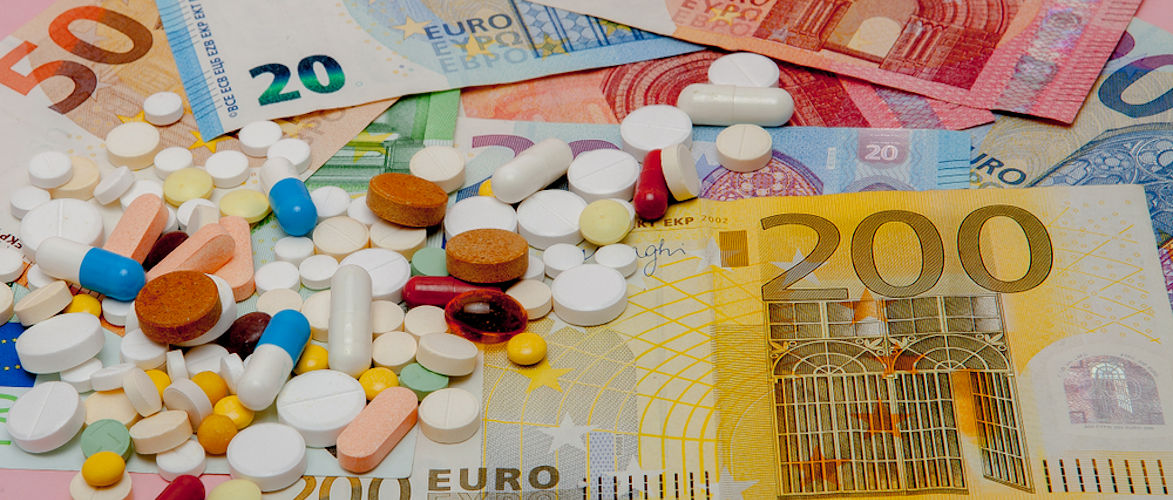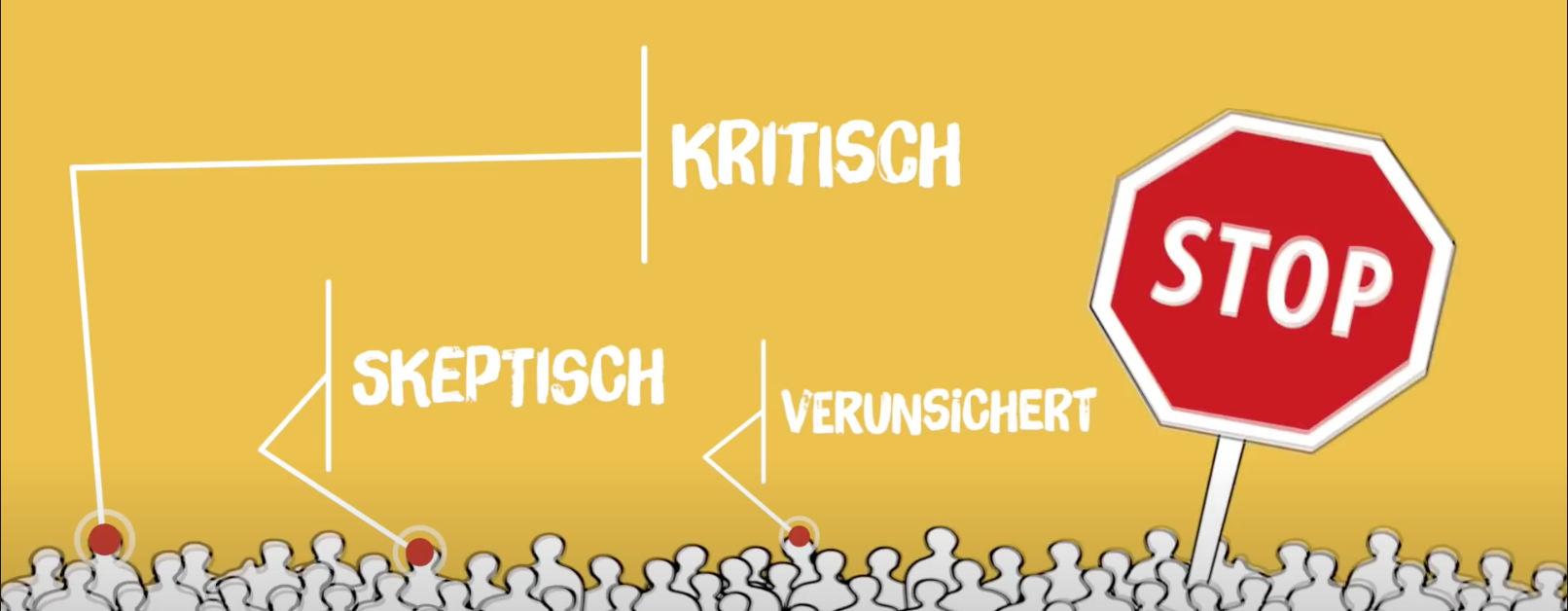What happens next? What will we have to face?
By Christian Kreiß.
When the latest economic data for the second quarter of 2020 appeared a few weeks ago, a “once-in-a-century recession”, the worst economic crash within a quarter in world economic history, was recorded.1 But what does this mean for us? And above all: What will happen next?
Recently, two interesting studies were published in this context: On September 16th by the OECD: “Coronavirus: Living with Uncertainty “2 and on September 17th by Save the Children/Unicef, a study entitled “150 MILLION ADDITIONAL CHILDREN PLUNGED INTO POVERTY DUE TO COVID-19”.3
According to the OECD study, the global economy shrank by more than 10 percent in the months from April to June 2020 compared to the end of 2019. Economic output in the second quarter of 2020 was thus some 12 percentage points lower than had been forecast by the OECD at the end of 2019. This means that economic power was almost one-eighth lower than had been expected shortly before. One eighth is quite a lot. Imagine having one-eighth less money in the household budget from one week to the next, which is quite noticeable to most people in their everyday lives.
It should be noted in passing that the OECD study misleadingly blames the Covid pandemic for the crash of the world economy, not the drastic, freedom-limiting lockdown measures of the governments. Of course, the coronavirus could have been dealt with in a completely different way than most of the world’s governments have done, as Sweden shows. Then the economy would not have crashed nearly as badly, as the example of Sweden also shows.
According to OECD economists, the economic collapse will not be made up for so quickly. For the end of 2021, they expect the global economic power to be a good five percent weaker than it would have been without the corona measures. However, this only applies to the average of all countries. Individual countries, above all China (about minus one percent) and Germany (about minus two percent) are expected to have largely made up for the output gap by the end of 2021, while other countries will continue to suffer severely from the slump at the end of 2021, such as India (minus 12 percent), Mexico (minus nine), Brazil and Turkey (minus six percent each).
Overall, the authors of the OECD study assume that the industrialized countries will recover from the collapse much faster than the emerging or developing countries. The main reason for this is that the industrialized countries have much more capital and financial muscle than the poor countries and are therefore in a better position to take economic countermeasures.
This brings us to the second study this week, from Save the Children or UNICEF. Again, it should be noted at the outset that this study also misleadingly blames the “pandemic” or “Covid-19 AND the lockdown measures” for all the misery it describes, which is wrong, because it was the government measures against the coronavirus alone that caused all the misfortune, not the virus itself, which could have been dealt with quite differently and could still be dealt with quite differently today. One just does not want to.
As the title suggests, since the outbreak of the Covid crisis to this day an additional 150 million children have already been plunged into poverty. Poverty is defined as multidimensional poverty, that is, when a child has no access to education, health, housing, nutrition, sanitation or water. Around 1.2 billion children in emerging and developing countries are currently suffering from this type of multidimensional poverty. At least 45 percent of the children in over 70 poor countries studied are not able to satisfy at least one of the basic needs listed above. Not only did the forced lockdowns add 150 million poor children, but those who were already in poverty before were now thrown even deeper into it and many children are experiencing misery like never before because of the Covid measures.
The report takes a very pessimistic view of the future. The situation is expected to deteriorate further in the coming months. “Most concerningly, we are closer to the beginning of this crisis than its end”, a high UNICEF expert is quoted. “This pandemic has already caused the biggest global education emergency in history,” of recent months alone has ensured that the future prospects for many millions of children have become dramatically worse.
As early as July, Oxfam published a study according to which the lockdown measures would increase the number of starving people on earth by about 120 million or 82 percent to 270 million. By the end of 2020, an additional 12,000 people per day are expected to die as a result of the corona measures. In April 2020, the peak number of people dying with or as a result of corona was just over 10,000, which means that, according to Oxfam, more people are likely to die as a result of the corona measures than from the virus itself. “Hunger is likely to kill us faster than the coronvirus ” the study says literally.
As early as July, Oxfam published a study4 according to which the lockdown measures would increase the number of starving people on earth by about 120 million or 82 percent to 270 million. By the end of 2020, an additional 12,000 people per day are expected to die as a result of the corona measures. In April 2020, the peak number of people dying with or as a result of corona was just over 10,000, which means that, according to Oxfam, more people are likely to die as a result of the corona measures than from the virus itself. “Hunger may kill us before coronavirus” the study says literally.
In addition: The median age of those who die worldwide from or with Covid is at or over 80 years.6 The starving deaths, on the other hand, are largely children. The number of years of life destroyed by the Covid lockdown measures is therefore likely to be many times greater than the years of life saved. The economist Raffelhüschen calculates a factor of 200 for Germany, meaning that the German lockdown measures destroy up to 200 times more years of life than are saved. This raises a massive question about the proportionality of the political lockdown measures. In my opinion, the cure – the lockdown measures – is many times worse than the disease corona.
At the same time, Oxfam points out that since the beginning of 2020, eight of the ten largest food companies have paid out a total of 18 billion dollars to their shareholders, ten times more than would be necessary according to UN figures to eliminate global hunger.
It should also be noted in passing that, according to the Wall Street Journal, the proportion of households that are sometimes or often hungry in the USA has risen from four to over 10 percent since the US lockdown measures, and from four to about 14 percent of households with children. This means that about one in seven children in the USA is currently living “food insecure”, i.e. has no secure nutritional basis. Most of this is due to the state measures against the coronavirus.
Well, the starving children in the Third World are far away from us, at least as long as they do not arrive in the form of refugee flows. So what do we inhabitants of wealthy industrialized countries have to face economically and socially? I assume that the economists of the OECD are – as so often – wrong in their forecasts. This economic model assumes a gradual return to the former growth path in the form of a stretched V-curve. What the model does not take into account, or takes far too little account in my estimation, are the huge mountains of debt and money that have been built up over the past decades.
Forecasting errors by mainstream economists are commonplace. Not only did almost all economists not see a financial crisis approaching until 2007, they also praised particularly unhealthy structures, for example Spain until 2007. Shortly after the introduction of the hard lockdowns in Germany at the end of March, our Council of Economic Experts (the “five wise men”) under Lars Feld predicted that the German economy would shrink by 2.8 percent in 2020 and then grow by 3.7 percent in 2021. Even in the worst case scenario, there would not be such a severe crash as in 2009. And this at a time when the world’s stock markets had just experienced the worst stock market crash of all time (between February 20 and March 23, the S&P 500 had plummeted by a third). In short: the forecast of the German Council of Economic Experts at the end of March was not very accurate.
Worldwide debt is currently a good 350 percent of the world’s national product. Measured in terms of global economic power, it has roughly doubled in the last 50 years. 11 350 percent is such a large mountain of debt that it is impossible to pay it back in real terms. In addition, the central bank money supply in the USA is currently roughly 7,000 billion dollars. Before the financial crisis of 2007, it was about 800 billion. The number of central bank dollars has thus almost nine-folded in the last 13 years. Colloquially, this is aptly called “starting up the money press”. The central bank money supply of the ECB currently amounts to about 6,500 billion euros and has thus six-folded in the last 15 years. This expansion of the central bank money supply was called “quantitative easing”, expansion of the money supply. In the same period, however, economic power did not grow nearly as strongly as the money supply.
The mountain of debt and money has thus grown many times faster than real economic power in recent decades. This means that the creditors, i.e. those people who hold the bills in their hands, believe today, just as they did 50 years ago, that the amount on the bills has a real value, namely the value written on the bills. But this is a big mistake or an illusion. I am not talking here about inflation, i.e. hidden devaluation of money, as we have practically always seen it in the post-war period, but about debt and money cover, quite independently of inflation. In concrete terms: a loaf of bread, a haircut, a car was faced a generation ago with only half as much debt and only a fifth to a tenth of the cash or fiat money today.
In other words, an account statement showing that there is a million euros or dollars in the brokerage account in form of bonds and deposits is not nearly as backed by real consideration today as it was a generation ago. If all holders of bills and bonds were to try to convert their papers into real goods and services today, they would realize, unlike a generation ago, that such a large number of goods and services do not exist.
In short, despite the debt and money explosion, we live today in the belief that our bills are still covered by real economic performance, just as they were before. But they have not been fully covered for a long time. If we are awakened from this sweet illusion, we will experience some unpleasant surprises. And this is where the famines of the emerging markets described above come into play. On the one hand, these countries cannot afford to buy our products because of reduced purchasing power or upcoming riots. On the other hand, their debt problems will also have repercussions for the rich industrialized countries, at the latest when the bond and currency markets run into problems and the Western creditor banks or investors have to write down the value of their portfolios. This is likely to have a negative impact on our financial markets as well.
Alternatively, we could also be woken up by a crash on the corporate bond markets because too many companies in the industrialized countries go bankrupt due to the lockdowns and are therefore unable to repay their debts. Many companies have taken on high levels of debt over the past 10 years and have been able to service it because of the central banks’ zero interest rate policy. At “normal” interest rates, some of these companies would have had to file for bankruptcy long ago, keyword “zombie companies”. Or the stock markets crash when the expected and forecasted economic growth and thus the profit growth priced in at the stock markets does not come.
I therefore see three possibilities:
-
either there is an official debt cut. But that means at the same time a cut in the assets of the creditors, i.e. the holders of the debt securities. I think this is unlikely because the multimillionaires and billionaires, who hold the vast majority of these claims, will resist this asset cut. And their influence on politics is VERY great, to express it mildly.
-
the central banks could seek to double or triple prices over perhaps 10 years, i.e. to generate medium-strong inflation of perhaps 5 to 20 percent per year in the dollar and euro zone for a few years. This would also correspond to a (real) debt cut of 50 to 66 percent, because inflation simply partially devalues the monetary securities in real terms. In view of the high unemployment rate and the declining mass purchasing power, however, it is likely to be very difficult for the central banks to get inflation off the ground.
-
If neither of these possibilities succeed, there will probably be a wave of bankruptcies, a financial crisis, bank failures, state failures, mass unemployment, chaos and riots. Corporate, state and bank bankruptcies are also a debt cut, but a disorderly, chaotic one that is likely to trigger a downward spiral with serious, sometimes incalculable macroeconomic and social consequences.
I think an orderly debt cut is best, inflation, even if it is miserable for a country, is second best or less bad. I dread solution three. I hope that we will solve the debt cut with reason or with inflation. Either way, I believe that the OECD economists’ gently growing V-shaped forecasting model is an illusion.
I fear there will be no going back to the years before 2020. The state-imposed forced lockdowns were and are such a serious cut not only in our civil liberties and our democracy, but also in our economic life, that a return to the comparatively good years before 2020 is, in my view, impossible. We are facing very significant social changes and probably very strong economic and, above all, social tensions. I am afraid that the riots in Stuttgart and Frankfurt were only the beginning – if we don’t change course immediately.
Prof. Dr. Christian Kreiß, born 1962: Studies and doctorate in economics and economic history at the LMU Munich. Nine years of professional activity as a banker, seven of which as an investment banker. Since 2002 professor at the University of Applied Sciences Aalen for Finance and Economics. Three invitations to the German Bundestag as an independent expert (Greens, Left Party, SPD), trade union member at ver.di. Numerous television, radio and magazine interviews, public lectures and publications.
Sources:
1 Reuters 30.7.2020: Wirtschaft bricht in Rekordtempo ein – „Jahrhundertrezession“: https://de.reuters.com/article/deutschland-bip-idDEKCN24V19I; „A Crisis like no other“; https://tradingeconomics.com/united-states/gdp-growth Stand 6.8.2020: „It is the biggest contraction ever“
2 file:///C:/Users/00413/Documents/Hintergrund-Info/oecd%2016th%20sep20.pdf
3 https://www.savethechildren.net/news/150-million-additional-children-plunged-poverty-due-covid-19-unicef-save-children-say
4 https://www.oxfam.org/en/press-releases/12000-people-day-could-die-covid-19-linked-hunger-end-year-potentially-more-disease; https://www.oxfam.org/en/world-brink-hunger-pandemic-coronavirus-threatens-push-millions-starvation
5 „Hunger may kill us before coronavirus“
7 https://www.welt.de/wirtschaft/plus209561613/Covid-19-Die-unbeachteten-Folgen-der-wirtschaftlichen-Vollbremsung.html
8 Wall Street Journal 2.9.2020: https://www.wsj.com/articles/hows-the-coronavirus-economy-great-or-awful-depending-on-whom-you-ask-11599039003
9 Welt.de 30.03.2020:
11 Weltbank Januar 2020
+++
Thanks to the author for the right to publish.
+++
Image source: Andrey_Popov / shutterstock
+++
KenFM strives for a broad spectrum of opinions. Opinion articles and guest contributions do not have to reflect the views of the editorial staff.
+++
KenFM now also available as a free app for Android and iOS devices! Via our homepage you can visit the stores of Apple and Google. Here is the link: https://kenfm.de/kenfm-app/
+++
Support us with a subscription: https://www.patreon.com/KenFMde
+++
You like our program? Information about further support possibilities here: https://kenfm.de/support/kenfm-unterstuetzen/
+++
Now you can also support us with Bitcoins.

BitCoin address: 18FpEnH1Dh83GXXGpRNqSoW5TL1z1PZgZK










Kommentare (0)